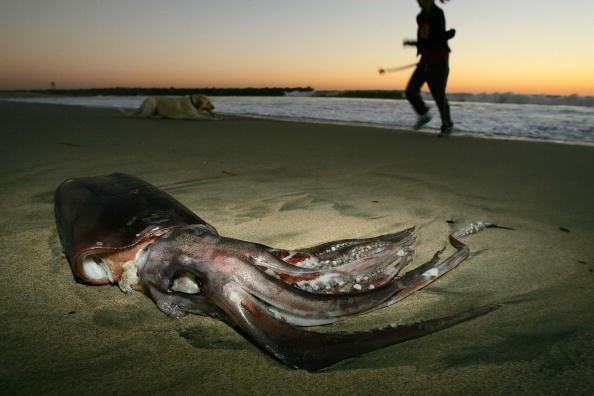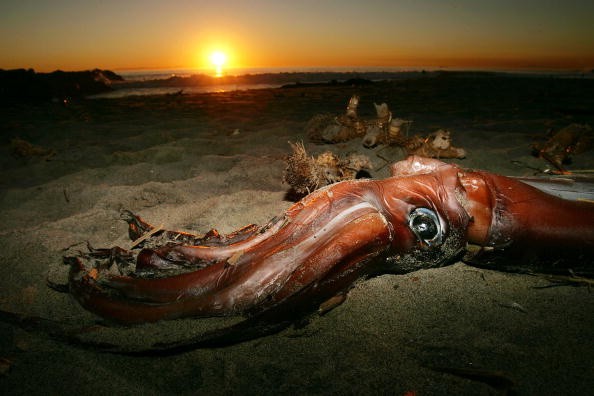The Mesozoic era predator and prey died due to lack of oxygen together underwater. About 180 million years ago, a predator with eight-arm captured its prey underwater - another beastie with eight arms - and started to feed on it, until tragedy occurred and both of them died from lack of oxygen, a recent study finds.

Analysis of the Shale Slab
The scientists wrote in the study, released online on the 16th of March in the Swiss Journal of Palaeontology that the shale slab grasping this duo's fossilized remnants stored marks of their soft tissues in uncommon detail.
An examination of the slab shows that the last time they spent together ended in an "eternal embrace," said the team. The study first author Christian Klug, who is a custodian at the University of Zurich's Palaeontological Museum and also a professor at its Palaeontological Institute said:
"We presume that the beast of prey was so excited about its catch that it didn't notice it was descending under the water, It likely tense in the layers of water without oxygen, suffocated, died and was submerged in the soft mud."
Also Read : Vampire Squids Are Cleaners of Global Garbage
The Fossilized Creatures
Amateur collector Dieter Weber discovered the slab grasping the marks in a deserted quarry facing a golf club in Ohmden, a city in southern Germany.
The fossilized creatures on the slab were kept with the arms of the predator encircled around the smaller prey which he found. After making the fossil ready, Dieter traded the piece to one of the scientists, who then gave it to the State Museum of Natural History Stuttgart.
During the Jurassic period when these creatures were still living, the area was a marine basin that stretched across much of central Europe. Klug told Live Science in an email that the bottom waters most times lack oxygen.
The ancient creatures are among the Octobrachia - a group of cephalopods with eight-arm including octopus, a deep-sea octopus with shell also called the paper nautilus - argonaut, and an animal that acquired its eerie name from its skin that is cape-like that attaches its arms, but is neither a squid nor a blood-sucker - vampire squid.

Vampyromorphs
Christian Klug said that both of the Jurassic animals are called vampyromorphs, the earliest relatives of the present-day vampire squid (Vampyroteuthis infernalis). Klug told Live Science in an email: "The vampyromorphs have eight arms plus, as we also exhibit here, twin filaments, which slightly resembles thick spaghetti that was prepared for a bit too long. These filaments are literally used to capture prey."
Today, vampire squid feed on plankton, detritus, and other small prey. But, as this sample shows, "the larger species of vampyromorph was a predator," Christian said.
After experimenting on the sample, the scientists determined that the larger, 47 cm long (18-inch) octobrachian is likely Jeletzkyteuthis coriacea. The smaller octobrachian is probably Parabelopeltis flexuosa, which at about 16.7 cm (6.5 inches) long, is less than 40% the length of the beast of prey that tried to feed on it.
Related Article : Vampire Squid Fossil Strayed During the Hungarian Revolution Found
For more news, updates about vampire squids and similar topics don't forget to follow Nature World News!
© 2025 NatureWorldNews.com All rights reserved. Do not reproduce without permission.





